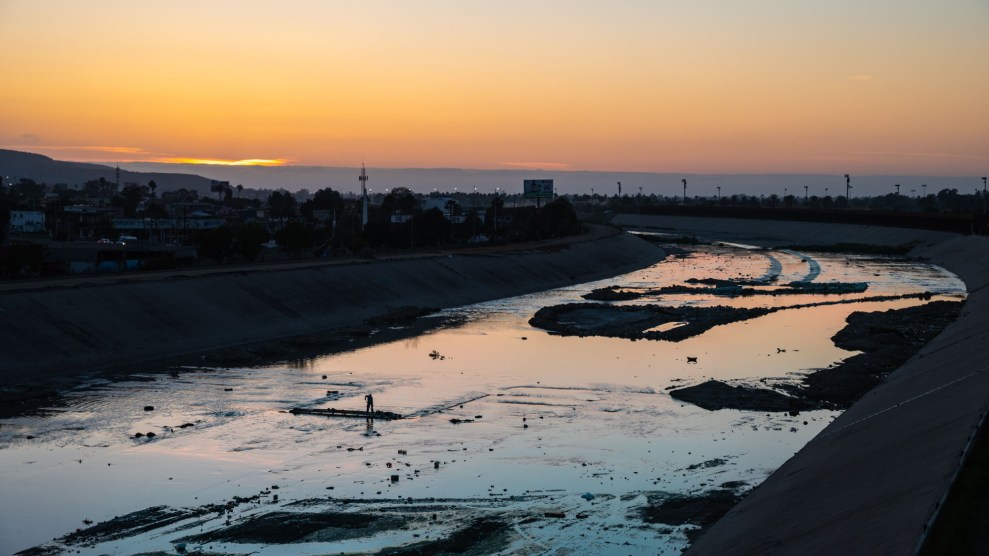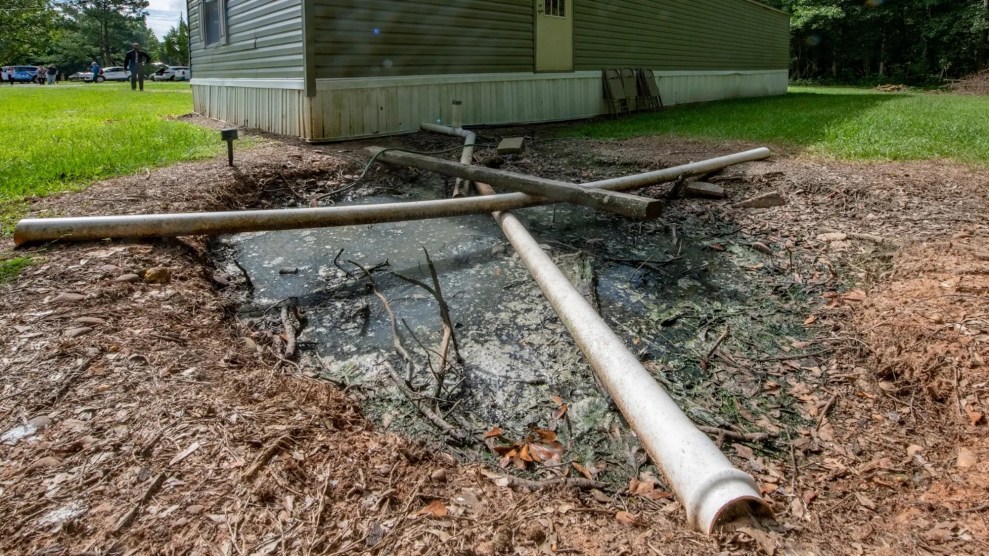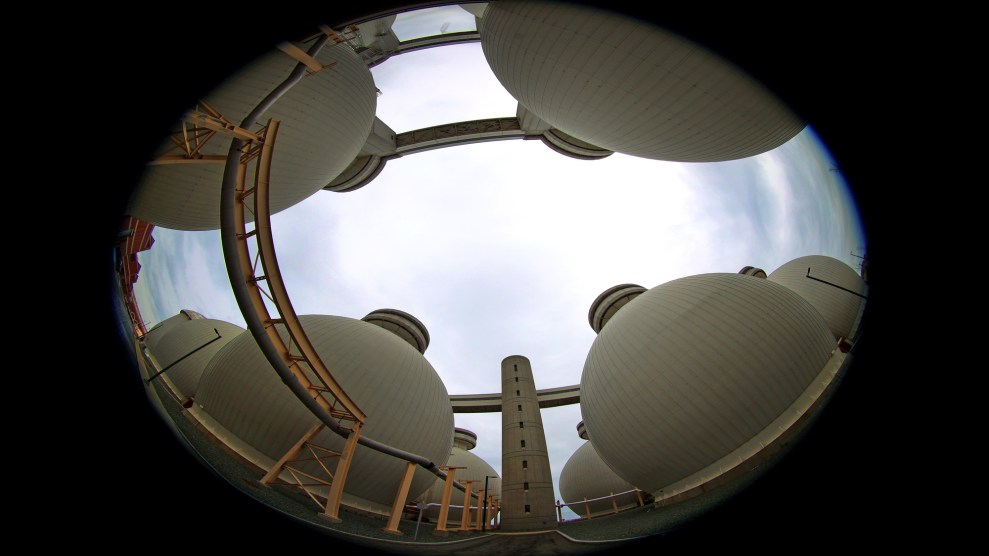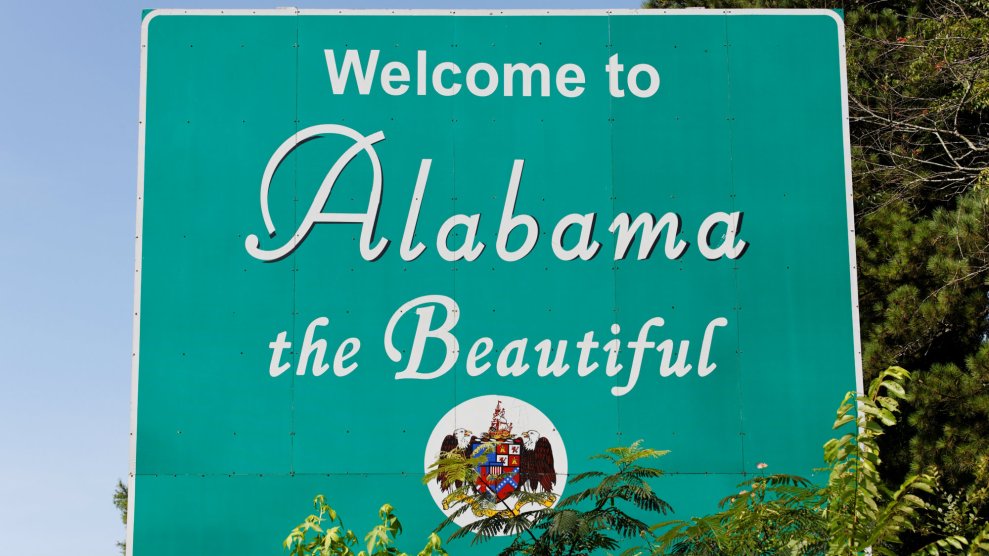
April 16, 2021, Tijuana, Mexico.Raquel Natalicchio / ZUMA
This story was originally published by the Guardian and is reproduced here as part of the Climate Desk collaboration.
Raw sewage and runoff in the Tijuana River is exposing communities at the US-Mexico border to an unusual and noxious brew of pathogens and toxic chemicals, according to a report released this week.
Billions of gallons of sewage flow through the river, which winds north from Mexico through California and empties into the Pacific Ocean, containing a mix of carcinogenic chemicals including arsenic, as well as viruses, bacteria and parasites, according to public health researchers at San Diego State University, who published the report.
The researchers have called the situation “a pressing public health crisis.”
Wastewater flowing into the ocean has resulted in more than 700 consecutive days of beach closures in San Diego county, but the contamination isn’t limited to the water. Pollutants and pathogens contained in sewage have also been detected in the local air and soil—exposing even those who live miles away from the water.
Communities on both sides of the border have been raising the alarm about this contamination for decades, complaining of the near-constant stench in the air, and pushing for better wastewater infrastructure. Unprecedented storms in recent years, exacerbated by the climate crisis, have put even more pressure on faltering sewage systems—and increased public health risks.
“This is not a trickle of contamination,” said Paula Stigler Granados, associate professor in San Diego State University’s School of Public Health and the paper’s lead author. “This is a large amount of contamination over a long period of time.”
For locals in Imperial Beach, a town just north of the Mexican border, the report validates years of frustration and fear about the spiralling sewage crisis.
“Imperial Beach is unfortunately the poster child of what an environmental injustice looks like,” said the city’s mayor, Paloma Aguirre.
A surfer and longtime coastal conservation advocate, Aguirre spent nearly two decades advocating for solutions to the contamination at Imperial Beach before she was elected mayor in 2022.
The situation had been complicated, she said, by the fact that the issue straddles the national border, requiring the US and Mexican governments to work together. In January, Mexico broke ground on a new wastewater treatment plant to replace an outdated facility in Punta Bandera, six miles south of the border.
Meanwhile, the US government in 2020 approved a $300 million fund to expand a wastewater treatment plant in San Ysidro, just north of the border. But a government memo obtained by the San Diego Union Tribune last year revealed the facility had been in such disrepair that half the funds would be needed just to maintain the existing infrastructure.
Aguirre and other local officials and advocates have since been pushing for an additional $310m in federal funds to improve wastewater treatment capacity, which Joe Biden included in an October emergency supplemental funding request that has yet to be approved by Congress. California’s governor, Gavin Newsom, and Congressman Scott Peters, whose district borders Imperial Beach, have also urged urgent action.
“In the history of this issue, we have never had as much attention on it as we have had these past 12 months,” said Aguirre. “Is it enough? No.”
This week’s report was commissioned in part to help bolster officials’ requests for more resources. To create it, Granados and her colleagues reviewed more than 60 studies and reports to present an overview of the public health and environmental risks of urban runoff and sewage in the region, at the request of Peters and the Conrad Prebys Foundation, a local charitable organization.
The report highlights a range of risks, including the spread of antibiotic resistant strains of E coli and legionella. The overflows may also carry illnesses that have nearly been eradicated in the US, such as tuberculosis, the report found. Mixed into the sewage are also toxic chemicals, including banned pesticides such as DDT, and heavy metals, probably from urban runoff of industrial waste that gets incorporated into the river’s flow, researchers said. These contaminants can also become airborne, as droplets flung by crashing waves, spreading pathogens and chemicals across vast swaths of the region.
The sewage also poses a grave risk to local ecosystems. The researchers point to a recent case in which bottlenose dolphins stranded in San Diego were found to have died from sepsis caused by a bacteria that is commonly transmitted through exposure to faeces or urine.
There is still much that researchers don’t know about the crisis, including the extent to which long-term exposure to the various contaminants, bacteria and other pathogens are affecting people’s health. But the researchers said that urgent investments in infrastructure and public health resources are needed.
“Everybody who lives here has been affected by it one way or another,” said Aguirre, who has herself been to urgent care a few times after contracting illnesses, including viral pharyngitis, after spending time near the water. “This has become a normal thing in our lives. But it should never be normal to anybody.”















